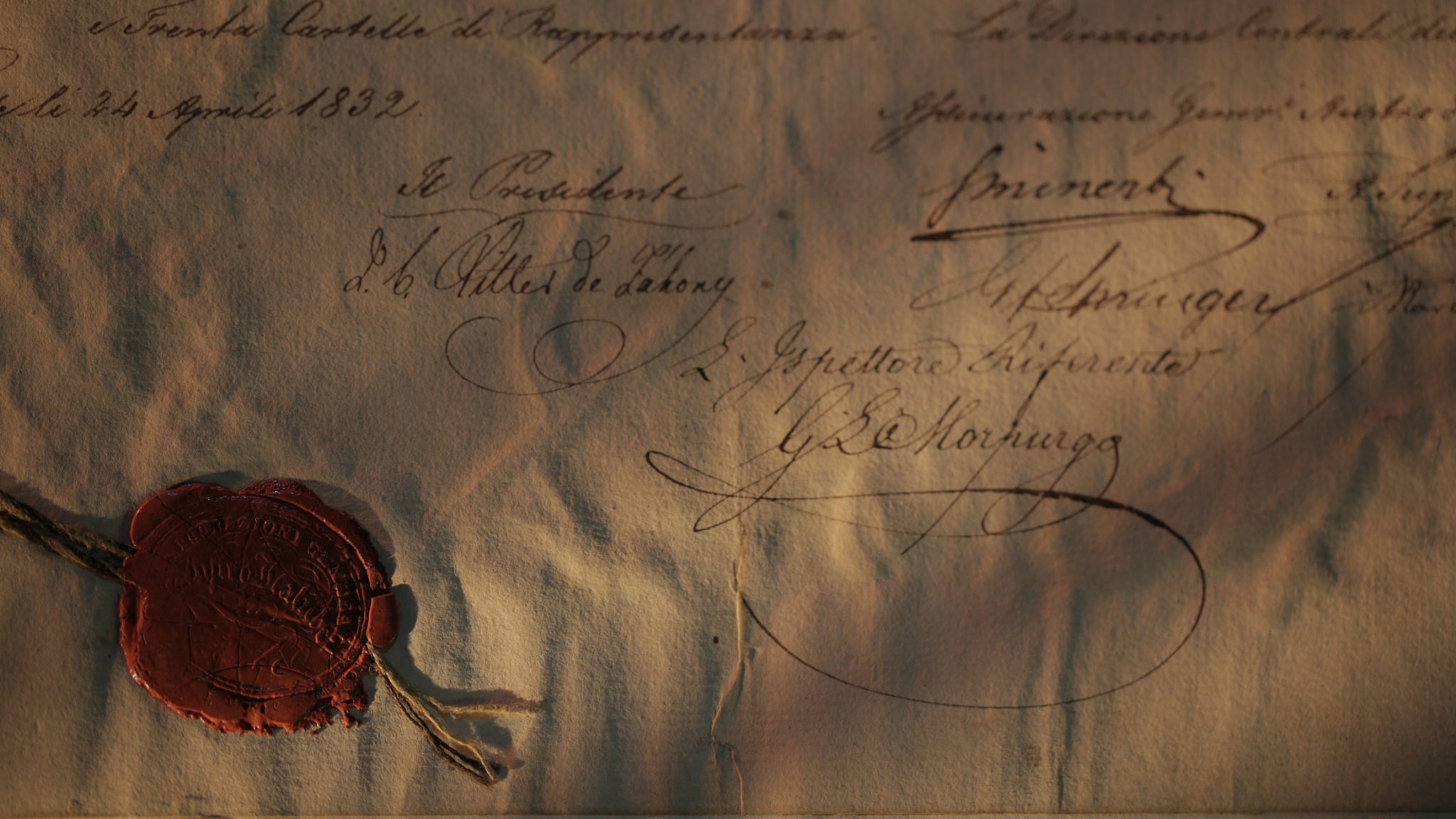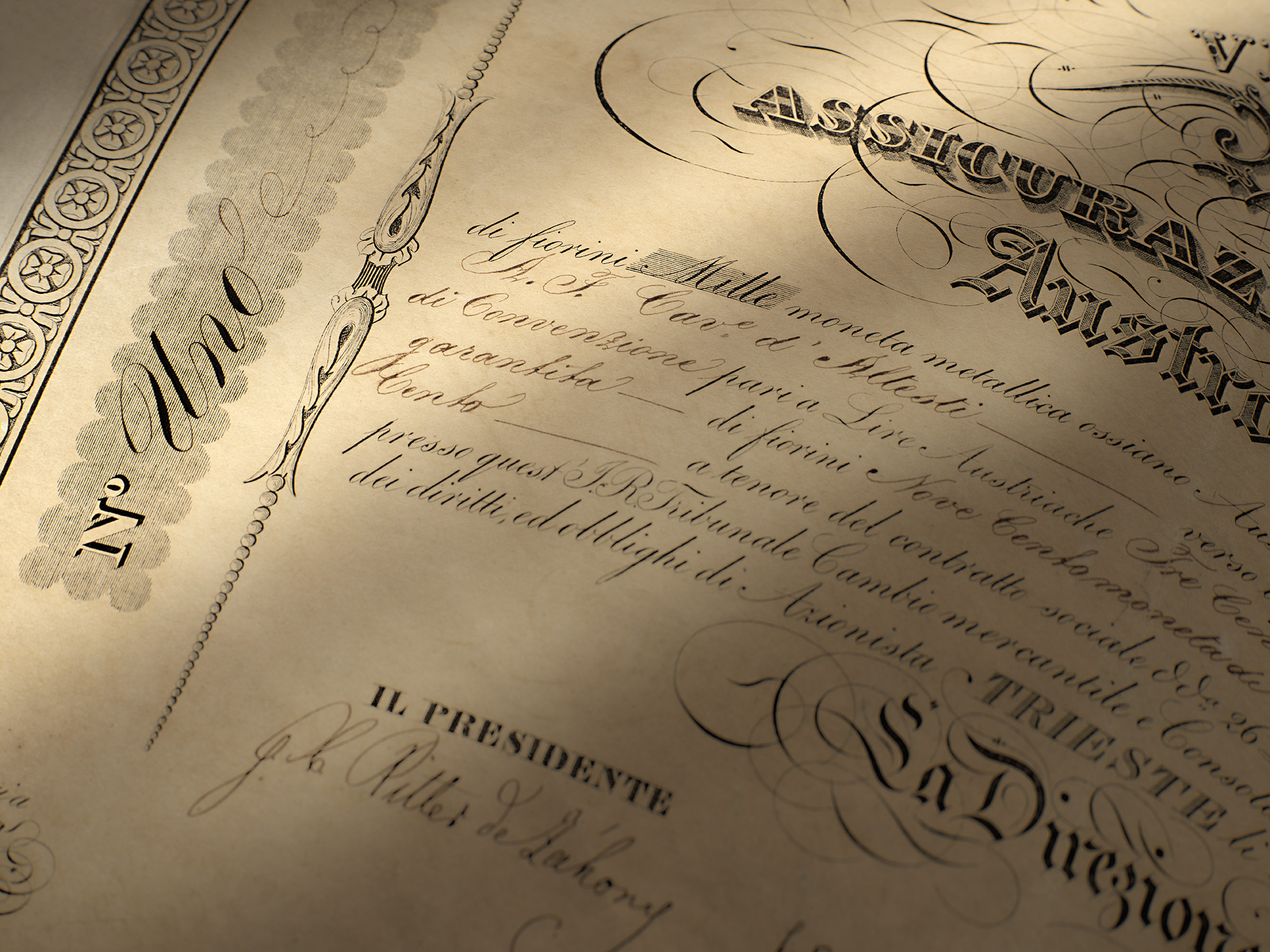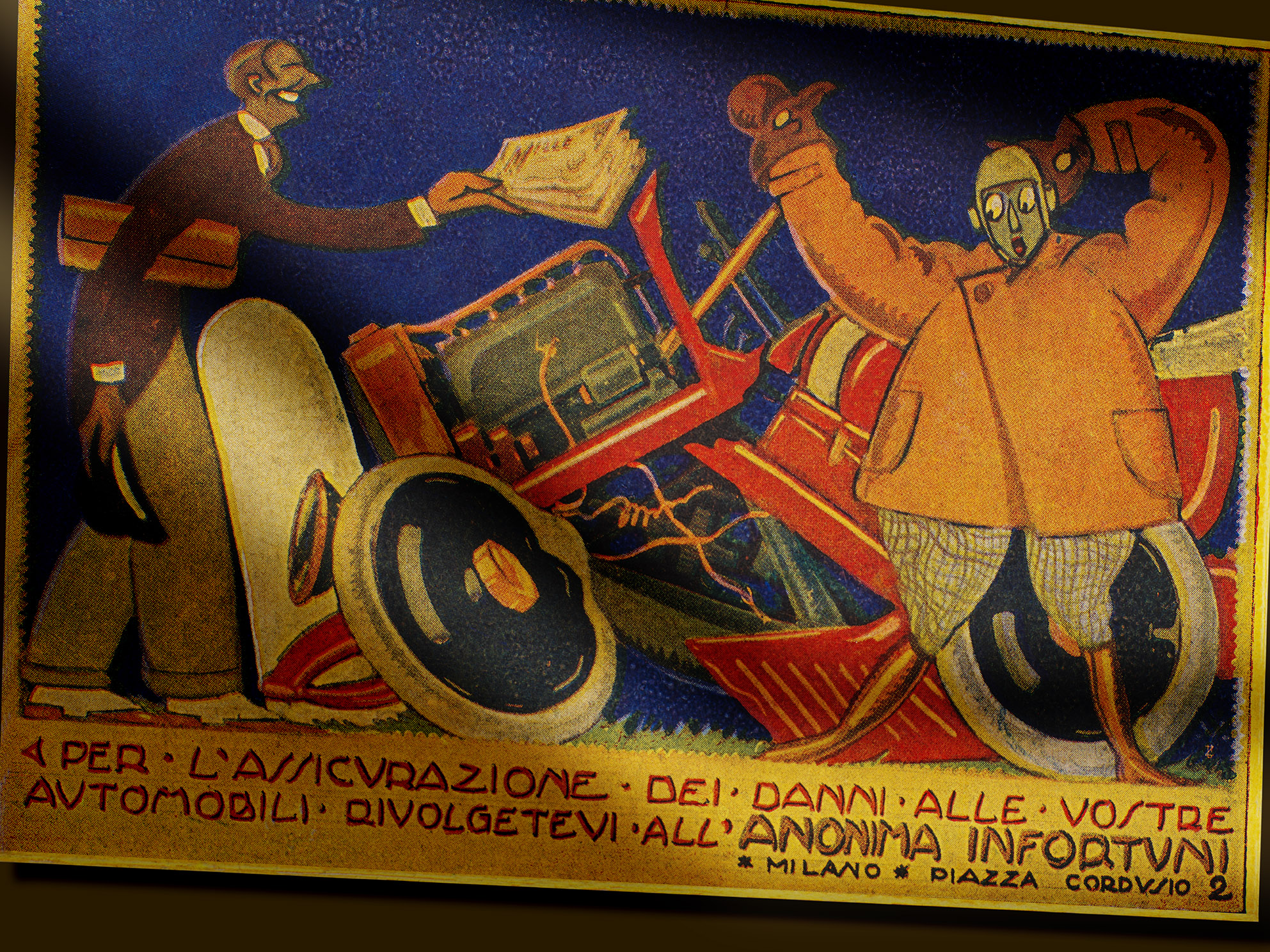Archive History
The declaration of significant historical interest issued by the Archival Superintendency of Friuli Venezia Giulia in 1983 concerning the Generali Archive because of its importance “at international level […] and for the economic development of the city” led to the Historical Archive project for promoting its documentation. Having established a working group composed of qualified personnel, old-time administrative, accounting and senior management documentation, and then that of technical branches and services, was recorded on specific software and made available to consultants.
The documentation was conserved in more than one location: in fact, the logic of formation of the Generali Archive, as in the case of business archives, is dependent on the internal organisation rather than the external regulatory environment, with custody decentralised to the company’s various departments and offices. Thus, many small archives with no structured system of document classification, with a few exceptions (life insurance and foreign operations departments).
In any case, it must be emphasised that careful archive keeping, for legal reasons but also for purposes of identity, has been present since the foundation of Generali: as early as 1832, the internal bylaws refer to a specific figure – Angelo Rosmini – who was responsible for correspondence, and as far as Management minutes are concerned, these began to be transcribed in volumes as a company requirement from November 1, 1832.
Scattered information about archives allows us to follow history over two centuries. For example, in 1875, there was talk of securing the archive against fire risk and the use of a “warehouse” mentioned for the keeping of accounting records (copies of the keys with secretary general Masino Levi and recorder Davide Cusin). In 1886, in the planning of the Geiringer building, specifically conceived for the Central Head Office, a specific room – the “Cell” – was built. Initially created for the custody of “bearer bonds in the Company’s name, in whichever country they were issued” because, with the solid armoured door manufactured by Arnheim in Berlin, the Company considered it safer than bank vaults, it housed important documents over the years such as Management minutes, company records, and 18th century and precious documents, which then took the place of securities. An important milestone in the history of the Archive is recorded in 1931 because one of the many initiatives organised for the centenary of its founding was the collection of documents of interest which are still conserved today, such as the oldest policies, the first Management correspondence, photographs and brochures, which formed the base of the volume Il centenario delle Assicurazioni Generali 1831-1931 (The Centenary of Assicurazioni Generali 1831-1931), the bedrock of Generali’s historiography.
In the twentieth century, news about different archives, in Trieste and Venice, thickens for several reasons, primarily as a result of war, which obliged the Company to transfer documents that were vital and fundamental for continuing business. The first precautionary measures were taken in August 1914 to make securities deposits in Vienna safe and to ensure contacts with the Empire agencies should Trieste remain isolated. Two years later, the Management arranged for the transfer of accounting, administrative and life insurance records, fearing occupation of the city by Italian troops. In January 1919, personnel files, securities and ledgers returned to Italy and the minutes provide precise instructions on the sorting of securities and making the “Cell” secure. Arrangement of all documentation produced by the life insurance division during the war was also provided for. During the Second World War, Generali had to reorganise its work both in Italy and abroad and it was considered advisable to move some offices with their archives to locations that were more strategic for communications. The fonds of the Venetian divisions were transferred to Stra, in the province of Venice, while the most important archives of Trieste were moved to Scodovacca, near Cervignano del Friuli, in the Chiozza agricultural estate. Besides news related to transfers during the wars, generally speaking there are frequent memoranda and in-house notes from the 1940s with instructions on the compilation and keeping of accounting records, indications on deposits and on the conservation and arrangement of documents; particularly in the 1960s, with the mechanisation of work, there are notes on decoding systems and the management of the current archive following restructuring of divisions. On the other hand, lacunae of a physiological nature and consequent to wars have compromised the technical-administrative documentation of the end of the 19th-early 20th century.





